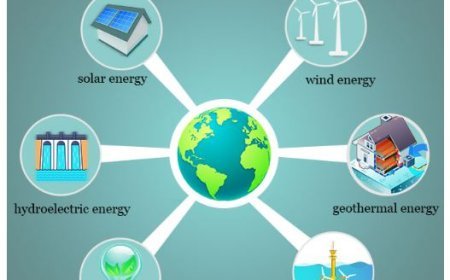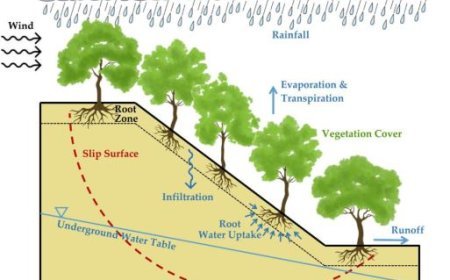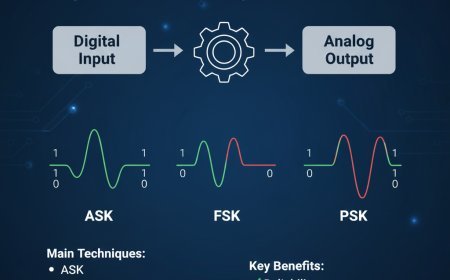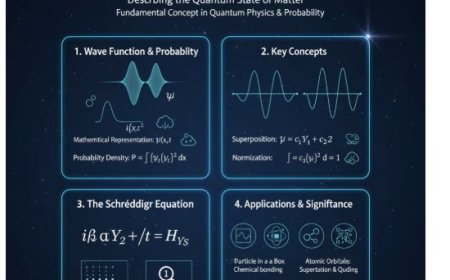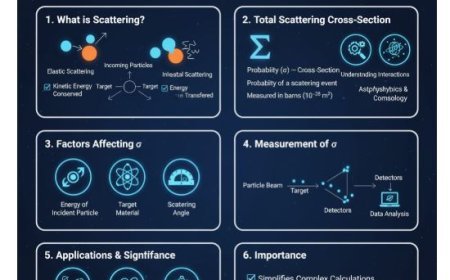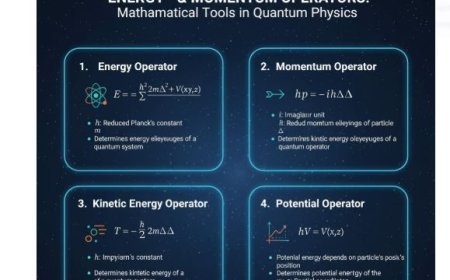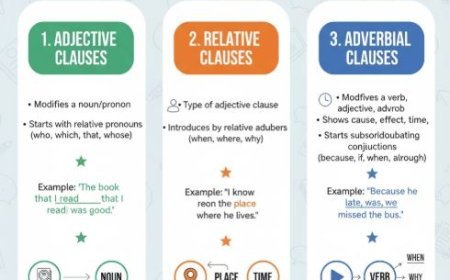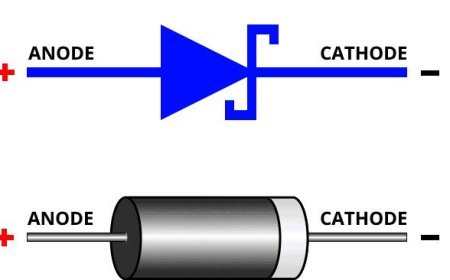Rotational Fine Structure in Electronic-Vibrational Transitions
Learn how rotational fine structure arises in electronic-vibrational transitions, its role in spectroscopy, and how it reveals molecular rotation, structure, and behavior in chemistry, physics, and astrophysics.
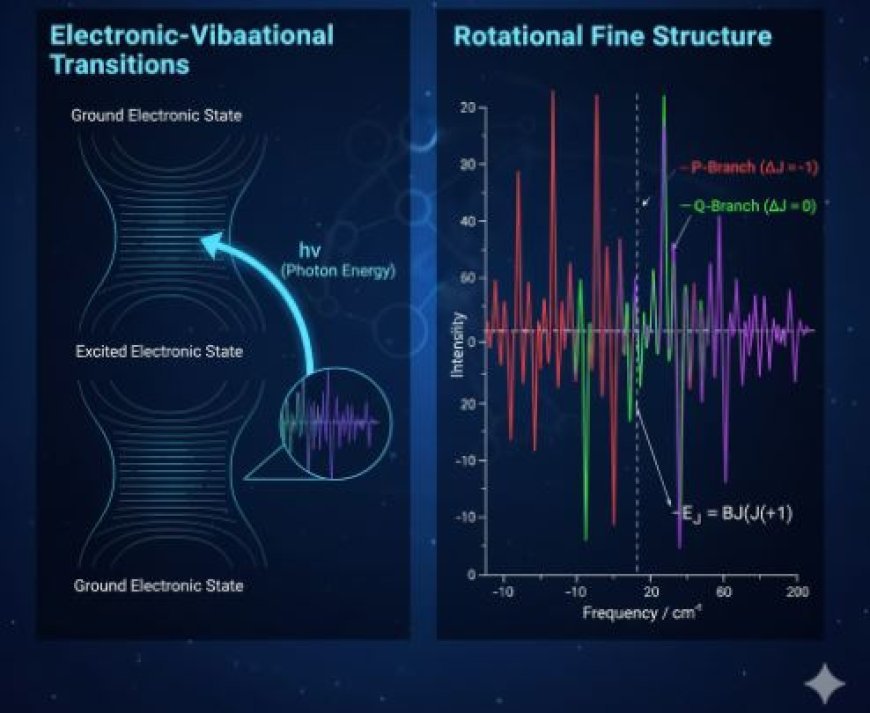
Understanding Rotational Fine Structure in Electronic-Vibrational Transitions
Introduction
- Molecular behavior is complex, with various interactions influencing their properties.
- Rotational fine structure in electronic-vibrational transitions is a crucial concept in spectroscopy, helping scientists analyze molecular motion and interactions.
1. Basics of Molecular Vibrations
1.1 What Are Molecular Vibrations?
- Molecular vibrations refer to the movement of atoms within a molecule.
- When a molecule absorbs energy (usually from electromagnetic radiation), atoms move out of equilibrium positions.
- These vibrational transitions often accompany electronic transitions, leading to complex spectra.
1.2 Types of Vibrations
Molecular vibrations are classified into two main types:
- Stretching: Changes in bond length.
- Symmetric stretching: Both atoms move in the same direction.
- Asymmetric stretching: Atoms move in opposite directions.
- Bending: Changes in bond angles.
- Scissoring, rocking, wagging, and twisting are common bending vibrations.
2. Electronic Transitions
2.1 What Are Electronic Transitions?
- Electronic transitions occur when a molecule absorbs energy, causing an electron to move from a lower energy level to a higher one.
- This process is fundamental to UV-Vis, fluorescence, and phosphorescence spectroscopy.
2.2 Interaction with Light
- The energy difference between two electronic states corresponds to the wavelength of absorbed or emitted light.
- Molecules absorb specific frequencies, leading to distinct spectra that provide insight into their electronic structure.
3. The Concept of Rotational Fine Structure
3.1 Defining Rotational Fine Structure
- Rotational fine structure refers to the splitting of spectral lines due to molecular rotation during electronic transitions.
- This fine structure provides valuable information about molecular rotational behavior and symmetry.
3.2 Origin of Fine Structure
Fine structure arises due to:
- Rotational Energy Levels: Molecules rotate and occupy distinct rotational energy states.
- Coupling with Vibrational States: Rotational and vibrational motions interact, causing further splitting of energy levels.
4. Understanding the Energy Levels
4.1 Quantization of Rotation
- Rotational energy is quantized, meaning molecules can only occupy specific rotational states.
- These states are defined by the rotational quantum number (J) and follow the energy relation:
where B is the rotational constant and J is the rotational quantum number.
4.2 Energy Level Representation
- Vibrational Energy Levels: Represent different vibrational states (often shown as horizontal lines).
- Rotational Energy Levels: Each vibrational level contains multiple rotational levels, causing fine splitting in spectra.
5. Importance of Rotational Fine Structure
5.1 Spectroscopic Techniques
Rotational fine structure is crucial in various spectroscopic methods, such as:
- Infrared (IR) Spectroscopy:
- Analyzes how molecules absorb IR radiation, revealing vibrational and rotational transitions.
- Used in chemical identification and atmospheric studies.
- Raman Spectroscopy:
- Measures scattered light to detect vibrational and rotational energy shifts.
- Useful in material science and biological studies.
5.2 Applications in Science
Understanding rotational fine structure is valuable for:
- Chemical Analysis:
- Helps identify molecular structures and analyze reaction mechanisms.
- Astrophysics:
- By studying molecular spectral lines in space, scientists can determine the composition and dynamics of interstellar gases.
Conclusion
- Rotational fine structure is a fundamental concept in spectroscopy, revealing detailed insights into molecular motion.
- It plays a critical role in chemical analysis, astrophysics, and molecular physics, enhancing our understanding of molecular interactions at a deeper level.
IMAGE SOURCE (THUMBNAIL)
What's Your Reaction?









